Scottish Marine and Freshwater Science Volume 5 Number 12: Strategic assessment of collision risk of Scottish offshore wind farms to migrating birds
Report to inform large scale indicative strategic assessments on the impact of offshore wind energy developments on birds.
Appendix 1. Annual collision mortality estimates
Figure 48 - Annual collision mortality estimates for Arctic skua on passage through Scottish offshore wind farms, using uniform and negative binomial flight distributions across the three coastal strips (near / mid / far; blue /pink / green bars respectively), using the three collision risk models (options 1 /2 / 3). Upper and lower 95% confidence intervals shown for CRM options 2 and 3.
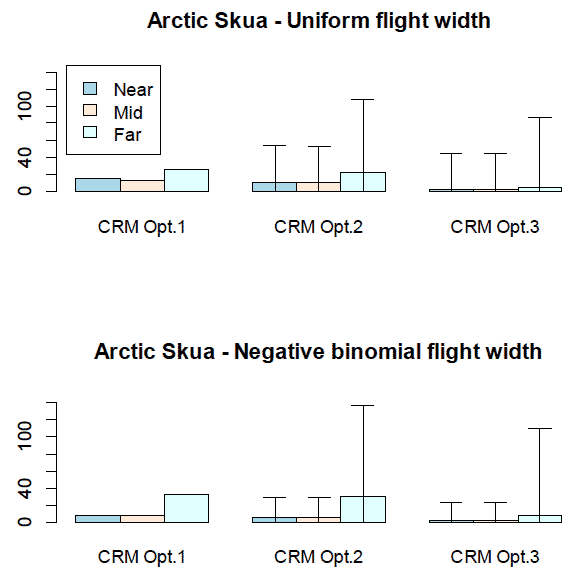
Figure 49 - Annual collision mortality estimates for Arctic tern on passage through Scottish offshore wind farms, using uniform and negative binomial flight distributions across the three coastal strips (near / mid / far; blue /pink / green bars respectively), using the three collision risk models (options 1 /2 / 3). Upper and lower 95% confidence intervals shown for CRM options 2 and 3.
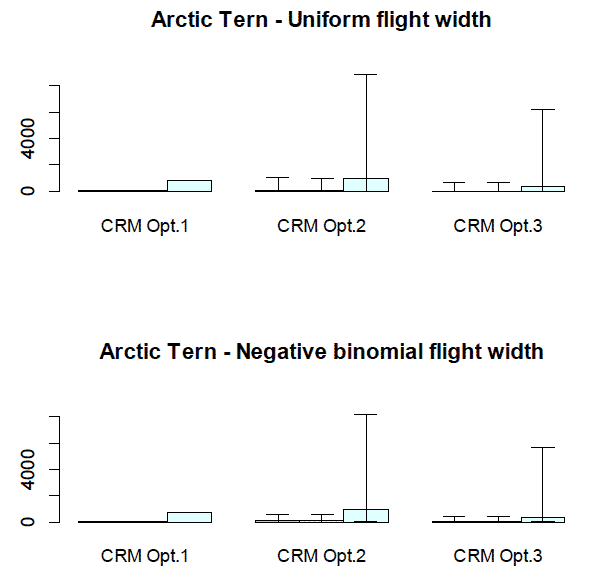
Figure 50 - Annual collision mortality estimates for little tern on passage through Scottish offshore wind farms, using uniform and negative binomial flight distributions across the three coastal strips (near / mid / far; blue /pink / green bars respectively), using the three collision risk models (options 1 /2 / 3). Upper and lower 95% confidence intervals shown for CRM options 2 and 3.
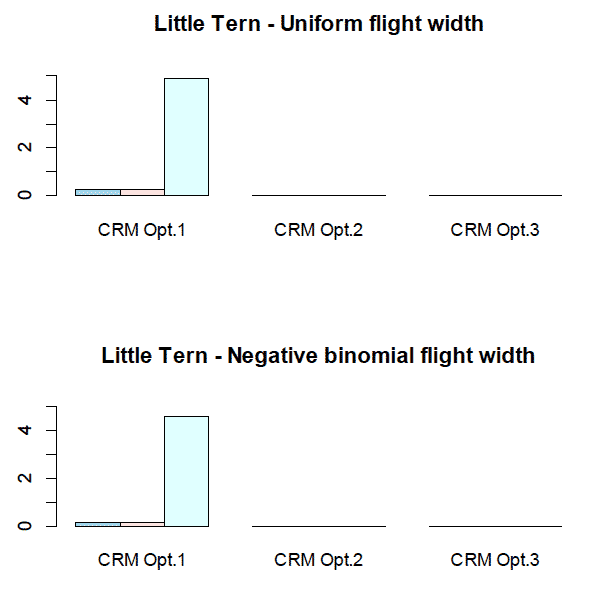
Figure 51 - Annual collision mortality estimates for black-headed gull on passage through Scottish offshore wind farms, using uniform and negative binomial flight distributions across the three coastal strips (near / mid / far; blue /pink / green bars respectively), using the three collision risk models (options 1 /2 / 3). Upper and lower 95% confidence intervals shown for CRM options 2 and 3.
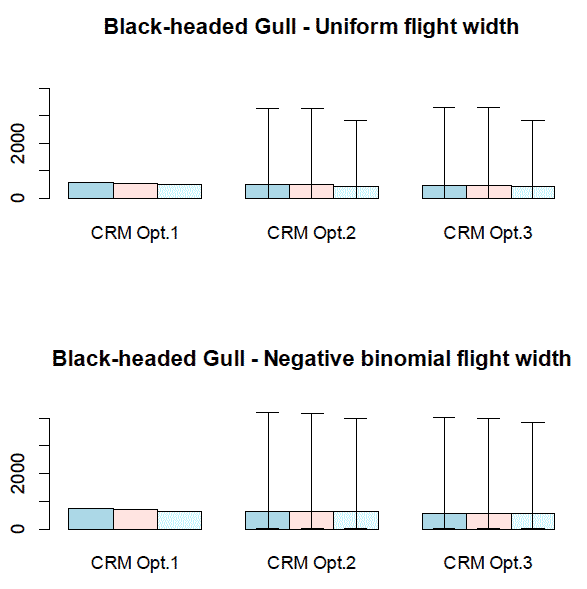
Figure 52 - Annual collision mortality estimates for black-throated diver on passage through Scottish offshore wind farms, using uniform and negative binomial flight distributions across the three coastal strips (near / mid / far; blue /pink / green bars respectively), using the three collision risk models (options 1 /2 / 3). Upper and lower 95% confidence intervals shown for CRM options 2 and 3.
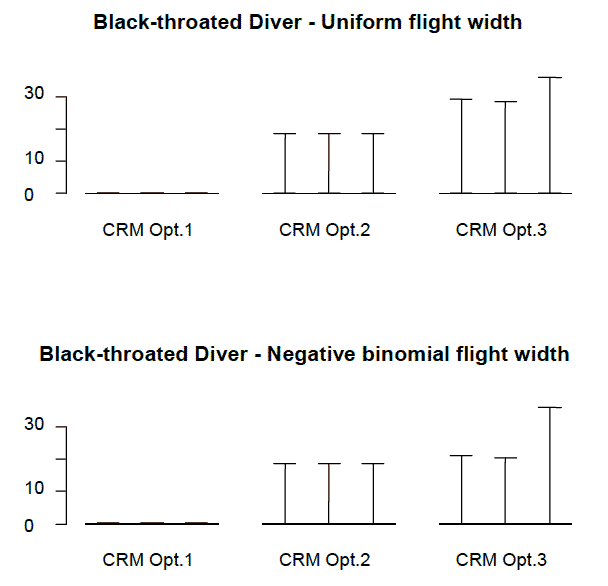
Figure 53 - Annual collision mortality estimates for cormorant on passage through Scottish offshore wind farms, using uniform and negative binomial flight distributions across the three coastal strips (near / mid / far; blue /pink / green bars respectively), using the three collision risk models (options 1 /2 / 3). Upper and lower 95% confidence intervals shown for CRM options 2 and 3.
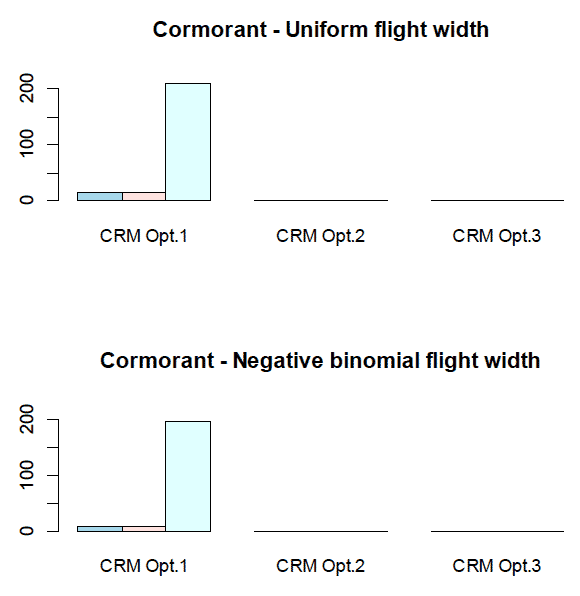
Figure 54 - Annual collision mortality estimates for common gull on passage through Scottish offshore wind farms, using uniform and negative binomial flight distributions across the three coastal strips (near / mid / far; blue /pink / green bars respectively), using the three collision risk models (options 1 /2 / 3). Upper and lower 95% confidence intervals shown for CRM options 2 and 3.
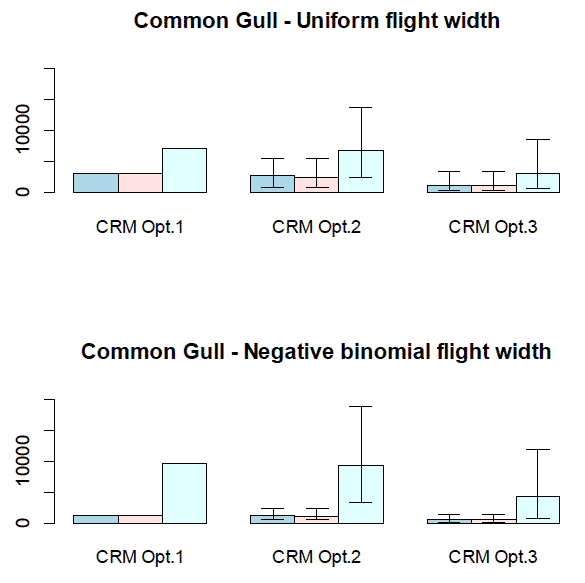
Figure 55 - Annual collision mortality estimates for common tern on passage through Scottish offshore wind farms, using uniform and negative binomial flight distributions across the three coastal strips (near / mid / far; blue /pink / green bars respectively), using the three collision risk models (options 1 /2 / 3). Upper and lower 95% confidence intervals shown for CRM options 2 and 3.
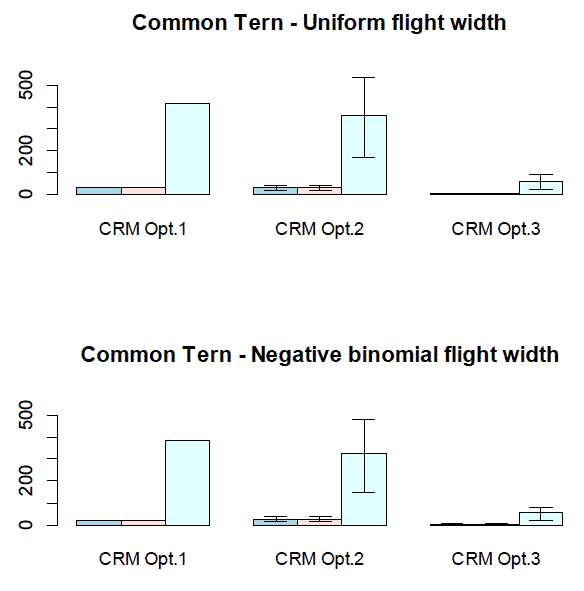
Figure 56 - Annual collision mortality estimates for fulmar on passage through Scottish offshore wind farms, using uniform and negative binomial flight distributions across the three coastal strips (near / mid / far; blue /pink / green bars respectively), using the three collision risk models (options 1 /2 / 3). Upper and lower 95% confidence intervals shown for CRM options 2 and 3.
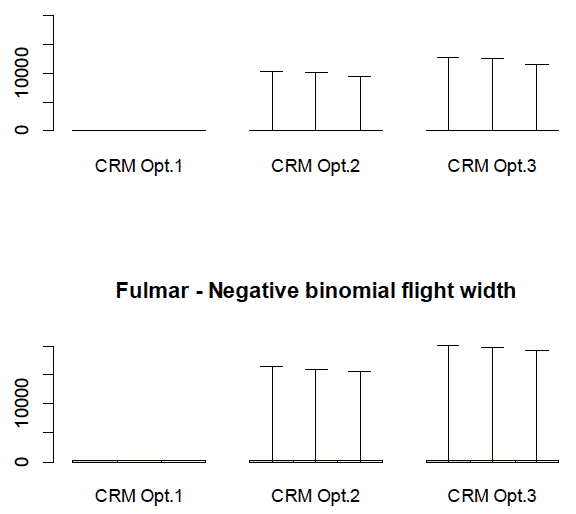
Figure 57 - Annual collision mortality estimates for great black-backed gull on passage through Scottish offshore wind farms, using uniform and negative binomial flight distributions across the three coastal strips (near / mid / far; blue /pink / green bars respectively), using the three collision risk models (options 1 /2 / 3). Upper and lower 95% confidence intervals shown for CRM options 2 and 3.
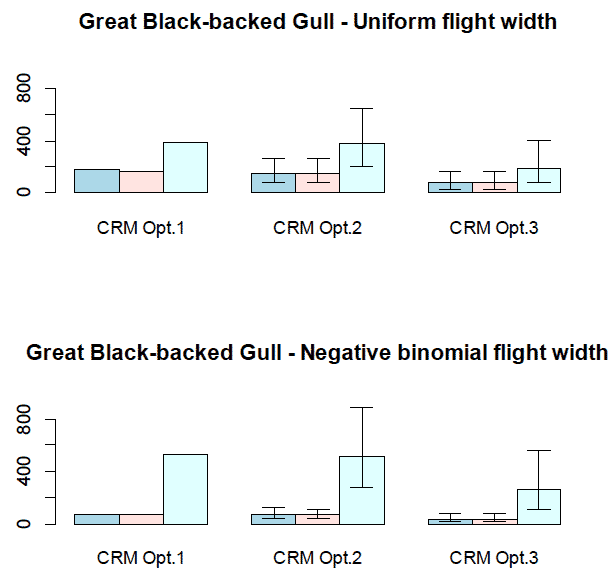
Figure 58 - Annual collision mortality estimates for guillemot on passage through Scottish offshore wind farms, using uniform and negative binomial flight distributions across the three coastal strips (near / mid / far; blue /pink / green bars respectively), using the three collision risk models (options 1 /2 / 3). Upper and lower 95% confidence intervals shown for CRM options 2 and 3.
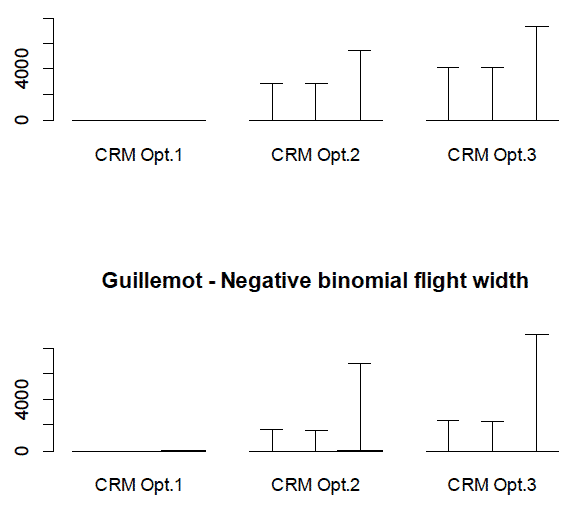
Figure 59 - Annual collision mortality estimates for gannet on passage through Scottish offshore wind farms, using uniform and negative binomial flight distributions across the three coastal strips (near / mid / far; blue /pink / green bars respectively), using the three collision risk models (options 1 /2 / 3). Upper and lower 95% confidence intervals shown for CRM options 2 and 3.
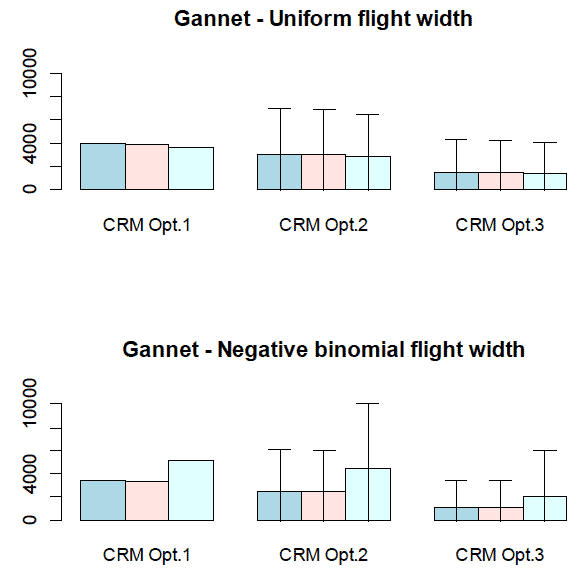
Figure 60 - Annual collision mortality estimates for herring gull on passage through Scottish offshore wind farms, using uniform and negative binomial flight distributions across the three coastal strips (near / mid / far; blue /pink / green bars respectively), using the three collision risk models (options 1 /2 / 3). Upper and lower 95% confidence intervals shown for CRM options 2 and 3.
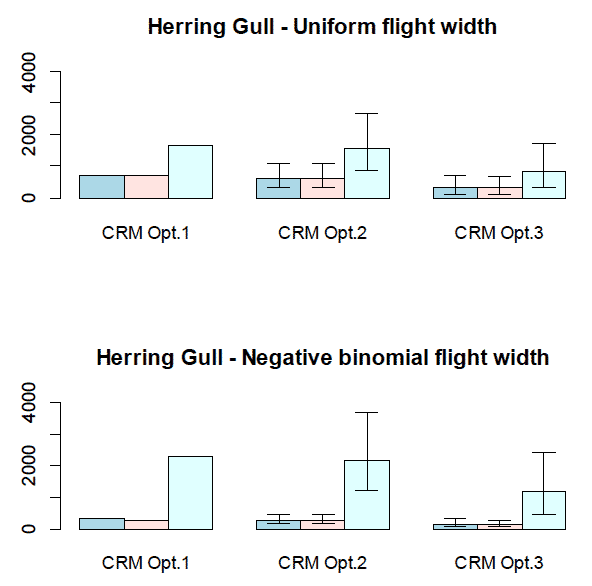
Figure 61 - Annual collision mortality estimates for kittiwake on passage through Scottish offshore wind farms, using uniform and negative binomial flight distributions across the three coastal strips (near / mid / far; blue /pink / green bars respectively), using the three collision risk models (options 1 /2 / 3). Upper and lower 95% confidence intervals shown for CRM options 2 and 3.
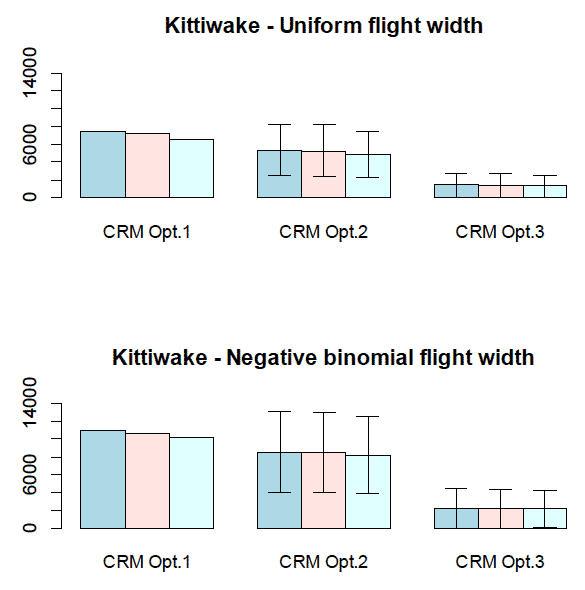
Figure 62 - Annual collision mortality estimates for lesser black-backed gull on passage through Scottish offshore wind farms, using uniform and negative binomial flight distributions across the three coastal strips (near / mid / far; blue /pink / green bars respectively), using the three collision risk models (options 1 /2 / 3). Upper and lower 95% confidence intervals shown for CRM options 2 and 3.
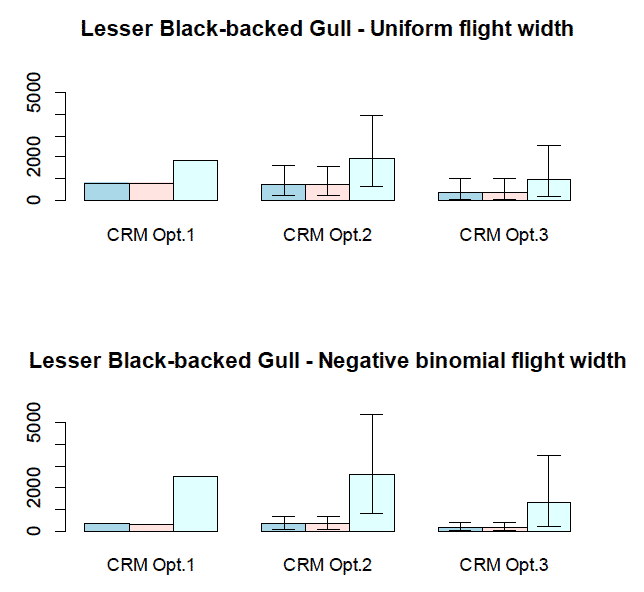
Figure 63 - Annual collision mortality estimates for little gull on passage through Scottish offshore wind farms, using uniform and negative binomial flight distributions across the three coastal strips (near / mid / far; blue /pink / green bars respectively), using the three collision risk models (options 1 /2 / 3). Upper and lower 95% confidence intervals shown for CRM options 2 and 3.
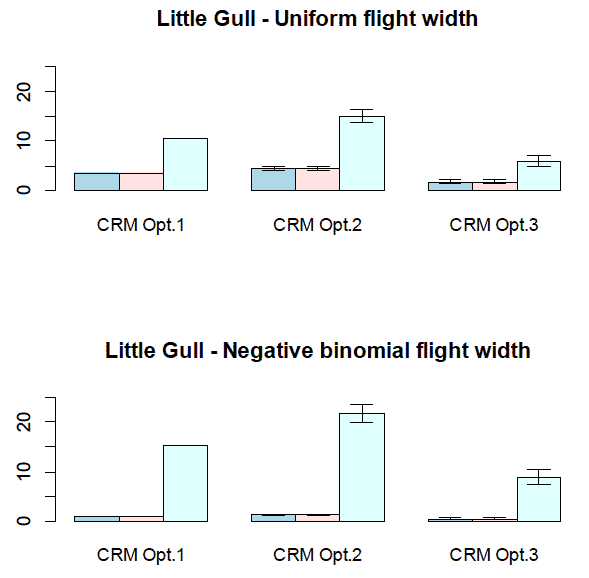
Figure 64 - Annual collision mortality estimates for great northern diver on passage through Scottish offshore wind farms, using uniform and negative binomial flight distributions across the three coastal strips (near / mid / far; blue /pink / green bars respectively), using the three collision risk models (options 1 /2 / 3). Upper and lower 95% confidence intervals shown for CRM options 2 and 3.
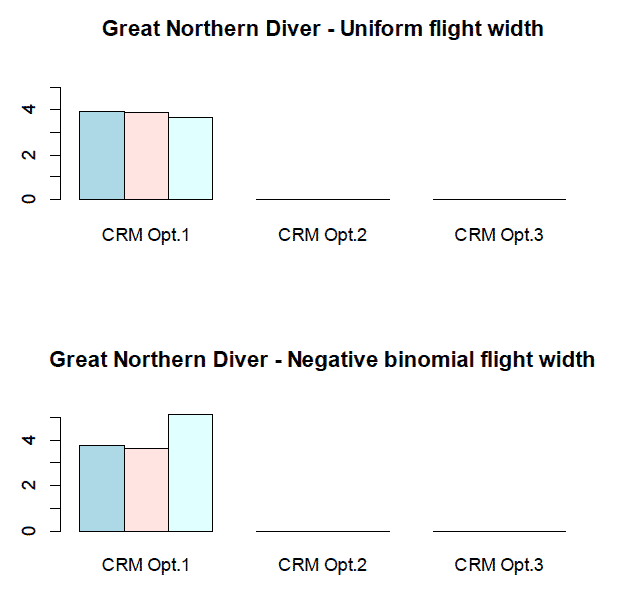
Figure 65 - Annual collision mortality estimates for great skua on passage through Scottish offshore wind farms, using uniform and negative binomial flight distributions across the three coastal strips (near / mid / far; blue /pink / green bars respectively), using the three collision risk models (options 1 /2 / 3). Upper and lower 95% confidence intervals shown for CRM options 2 and 3.
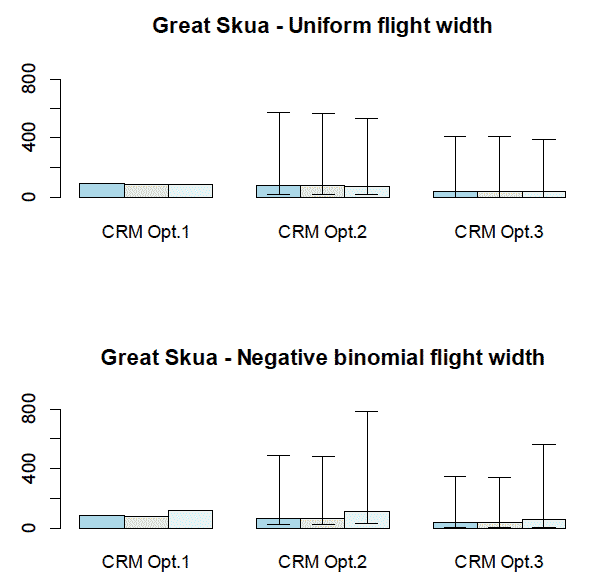
Figure 66 - Annual collision mortality estimates for long-tailed skua on passage through Scottish offshore wind farms, using uniform and negative binomial flight distributions across the three coastal strips (near / mid / far; blue /pink / green bars respectively), using the three collision risk models (options 1 /2 / 3). Upper and lower 95% confidence intervals shown for CRM options 2 and 3.
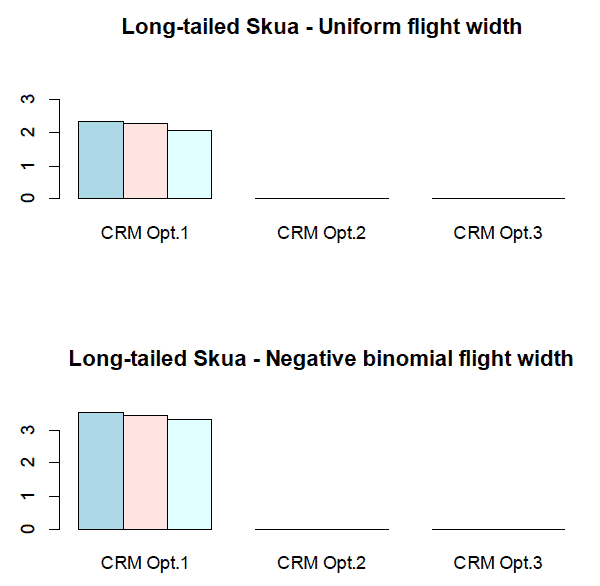
Figure 67 - Annual collision mortality estimates for Pomarine skua on passage through Scottish offshore wind farms, using uniform and negative binomial flight distributions across the three coastal strips (near / mid / far; blue /pink / green bars respectively), using the three collision risk models (options 1 /2 / 3). Upper and lower 95% confidence intervals shown for CRM options 2 and 3.
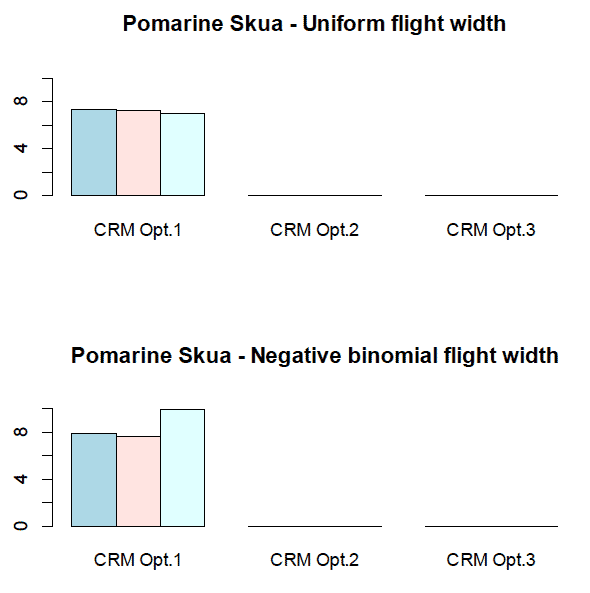
Figure 68 - Annual collision mortality estimates for puffin on passage through Scottish offshore wind farms, using uniform and negative binomial flight distributions across the three coastal strips (near / mid / far; blue /pink / green bars respectively), using the three collision risk models (options 1 /2 / 3). Upper and lower 95% confidence intervals shown for CRM options 2 and 3.
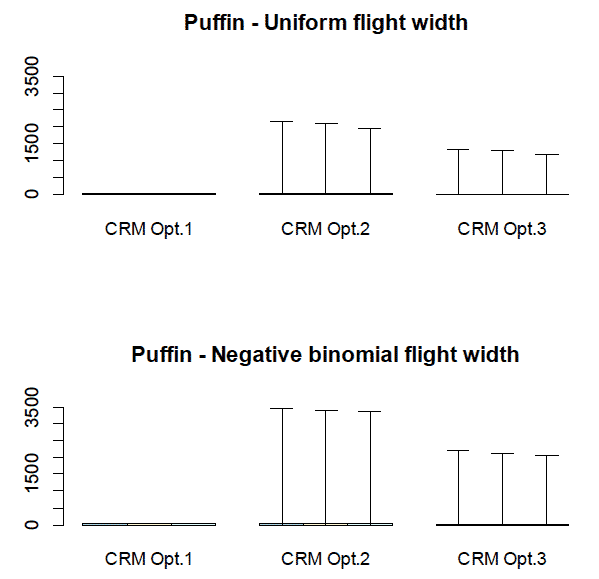
Figure 69 - Annual collision mortality estimates for razorbill on passage through Scottish offshore wind farms, using uniform and negative binomial flight distributions across the three coastal strips (near / mid / far; blue /pink / green bars respectively), using the three collision risk models (options 1 /2 / 3). Upper and lower 95% confidence intervals shown for CRM options 2 and 3.
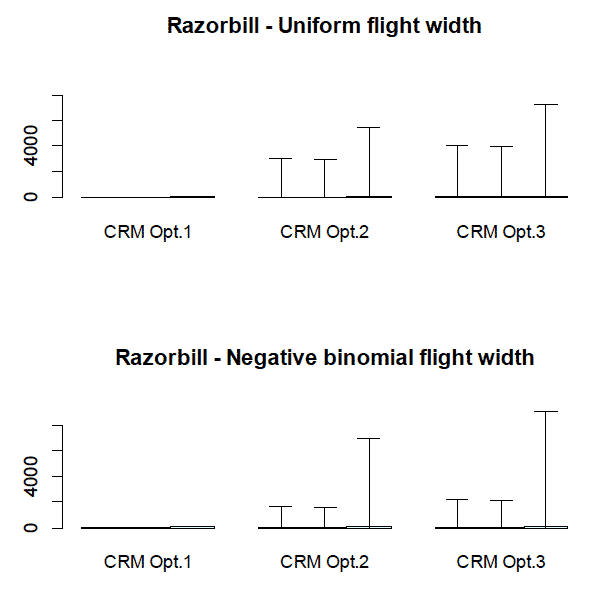
Figure 70 - Annual collision mortality estimates for red-throated diver on passage through Scottish offshore wind farms, using uniform and negative binomial flight distributions across the three coastal strips (near / mid / far; blue /pink / green bars respectively), using the three collision risk models (options 1 /2 / 3). Upper and lower 95% confidence intervals shown for CRM options 2 and 3
.
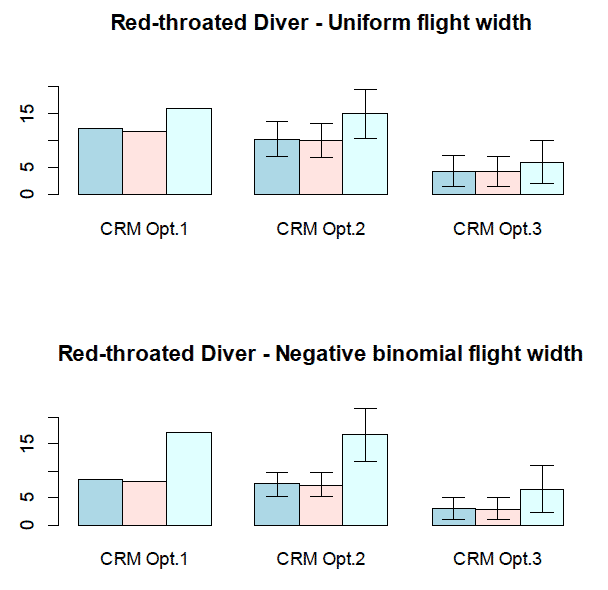
Figure 71 - Annual collision mortality estimates for shag on passage through Scottish offshore wind farms, using uniform and negative binomial flight distributions across the three coastal strips (near / mid / far; blue /pink / green bars respectively), using the three collision risk models (options 1 /2 / 3). Upper and lower 95% confidence intervals shown for CRM options 2 and 3.
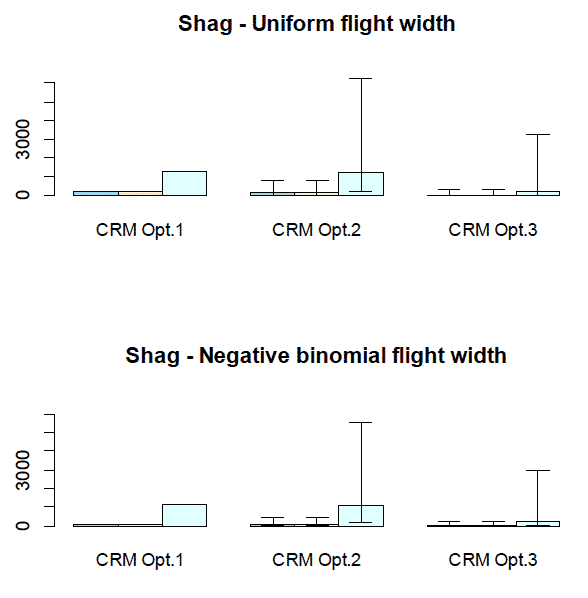
Figure 72 - Annual collision mortality estimates for Sandwich tern on passage through Scottish offshore wind farms, using uniform and negative binomial flight distributions across the three coastal strips (near / mid / far; blue /pink / green bars respectively), using the three collision risk models (options 1 /2 / 3). Upper and lower 95% confidence intervals shown for CRM options 2 and 3.
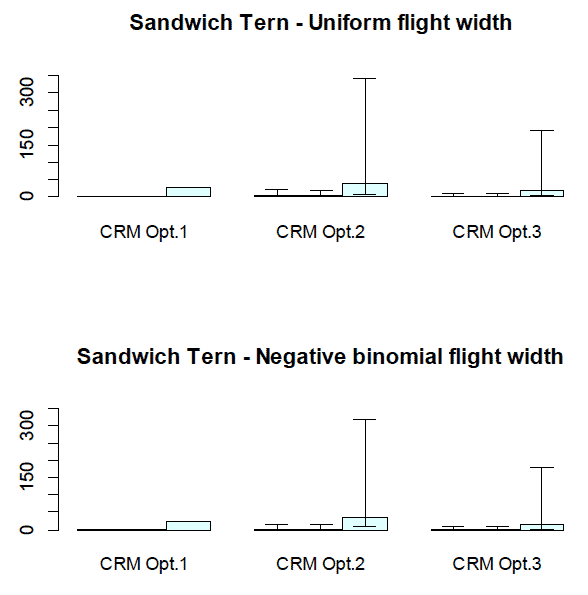
Figure 73 - Annual collision mortality estimates for Leach's petrel on passage through Scottish offshore wind farms, using uniform and negative binomial flight distributions across the three coastal strips (near / mid / far; blue /pink / green bars respectively), using the three collision risk models (options 1 /2 / 3). Upper and lower 95% confidence intervals shown for CRM options 2 and 3.
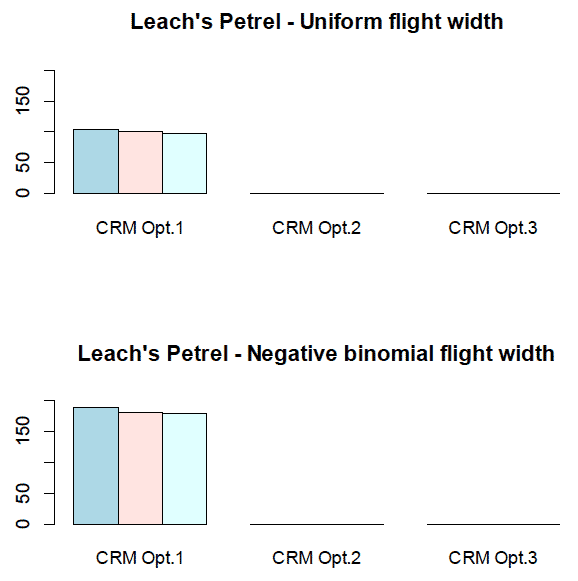
Figure 74 - Annual collision mortality estimates for storm petrel on passage through Scottish offshore wind farms, using uniform and negative binomial flight distributions across the three coastal strips (near / mid / far; blue /pink / green bars respectively), using the three collision risk models (options 1 /2 / 3). Upper and lower 95% confidence intervals shown for CRM options 2 and 3.
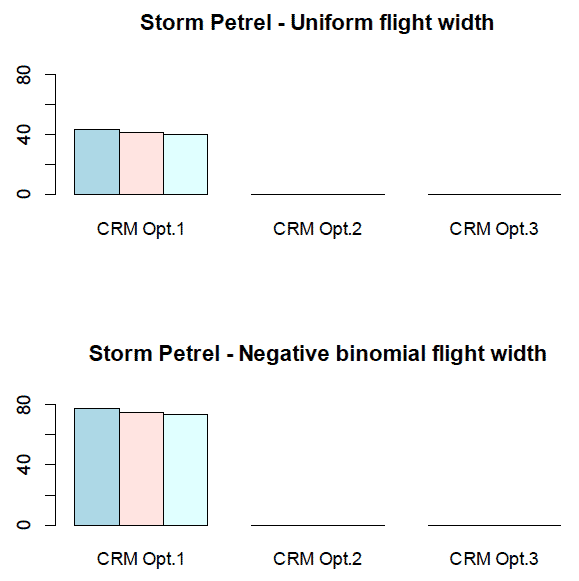
Contact
There is a problem
Thanks for your feedback